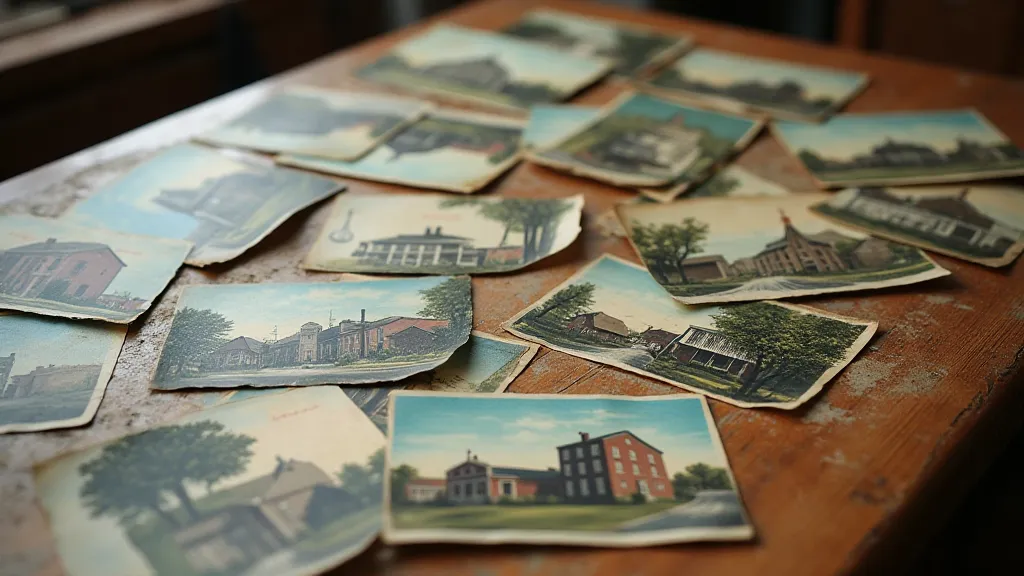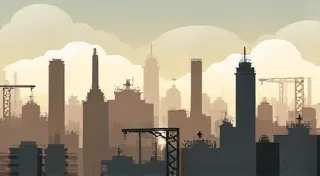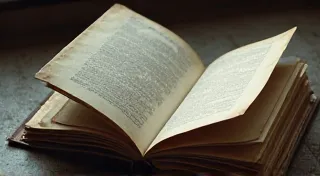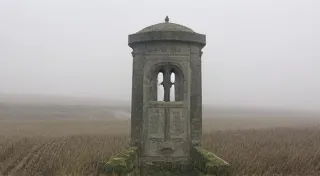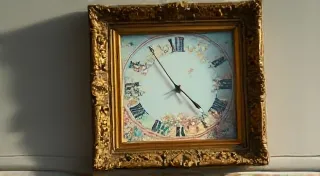The Echo of Absence: Postcards as Relics of Displaced Communities
There’s a peculiar melancholy that clings to vintage postcards. It’s not just the faded inks or the brittle paper; it's something deeper, a feeling that resonates from the image itself, a whisper of a world that no longer exists. While many postcards celebrate sunny vacations and grand landmarks, some offer a far more poignant narrative – the silent testimony of communities lost, displaced, or irrevocably altered by the relentless march of time.
My fascination began, as many collecting journeys do, with a simple find at a flea market. It was a postcard, unremarkable at first glance, depicting a row of storefronts. The inscription on the back, penned in elegant cursive, read simply, "Home, 1912." The address was familiar, yet the streetscape depicted was utterly foreign. My research revealed that the town pictured, Oak Haven, nestled in a valley just west of my current home, had been deliberately flooded in the 1950s to create a reservoir. The houses, the businesses, the lives – all submerged beneath a glassy expanse of water. That postcard wasn’t just an image; it was a fragment of a lost memory, a tangible link to a place erased from the map.
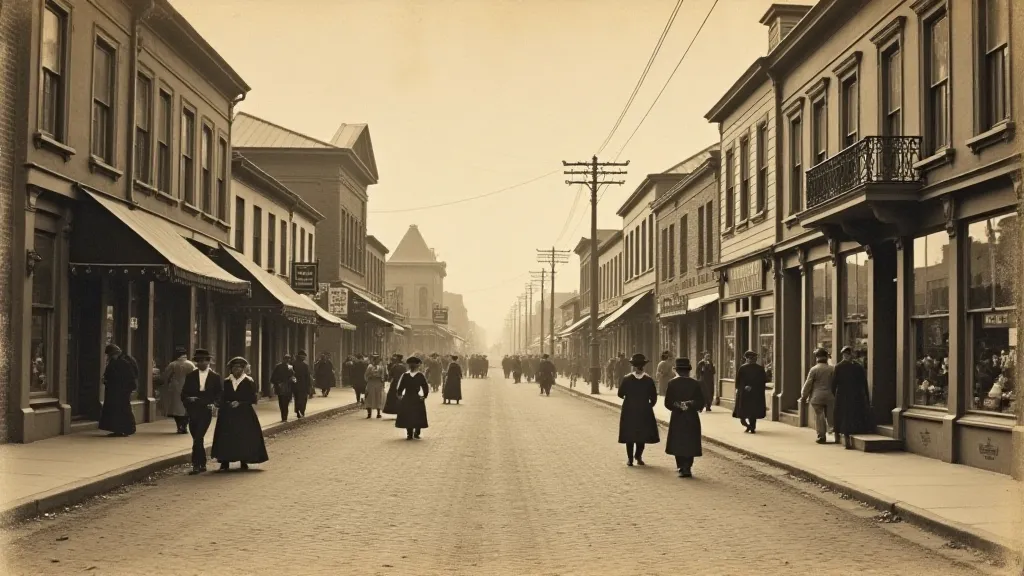
Landscapes Swallowed by Progress
The stories behind these postcards are often heartbreaking. Urban development, particularly during the 20th century, swallowed entire neighborhoods in the name of progress. Factories demanded space, highways sliced through established communities, and the allure of modern housing tempted people to abandon their ancestral homes. The postcards remain, frozen in time, offering glimpses of what was lost – the bustling markets, the corner stores, the familiar faces. They become silent witnesses to a kind of collective forgetting. The way these spaces were visualized and presented on postcards, and the very act of collecting them, speaks to a broader phenomenon of mapping desire and recording fleeting moments – a topic explored in more detail in articles like "Cartomania: Mapping Desire Through Antique Postcard Landscapes".
Consider the countless African American communities that were systematically destroyed in the name of urban renewal. Places like Tulsa’s Greenwood district, known as “Black Wall Street,” were razed to the ground, their vibrant culture and economic prosperity extinguished in a matter of hours. Postcards from Greenwood, depicting thriving businesses and proud residents, are now incredibly rare and deeply moving. They serve as a powerful reminder of the injustice and the erasure of Black history. The images on these postcards, and the narratives they convey, often defy simplistic representations, demanding a more nuanced understanding of the voices lost and the perspectives marginalized. It’s easy to overlook the subtle cues and intentional choices made in framing these images – the careful consideration of borders and angles – all contributing to the overall message being communicated. A deeper dive into “The Language of Framing: How Postcard Borders Shape Perception” reveals how these seemingly minor details can significantly alter how we interpret a scene.
The Human Toll of Conflict and Disaster
Conflict, of course, leaves its own devastating mark. Postcards from war-torn regions, depicting bombed-out buildings or refugee camps, offer a visceral understanding of human suffering. The cheerful facade of the postcard format clashes starkly with the grim reality it portrays, creating a haunting dissonance. These aren't the postcards you're sending to wish someone well; they are echoes of desperation, reminders of the fragility of peace. Natural disasters also contribute to this poignant collection. Entire coastal towns have been claimed by rising sea levels or obliterated by hurricanes. Communities nestled in valleys have been swept away by landslides. The postcards that survive become precious artifacts, documenting a way of life that has vanished beneath the waves or buried under rubble.
The Craftsmanship and Preservation of Memory
Beyond the emotional weight, examining these vintage postcards also offers a fascinating look at the craftsmanship of a bygone era. The lithography techniques used to print them were incredibly intricate, requiring skilled artisans. The quality of the paper, the vibrancy of the colors – these details speak to a commitment to producing something beautiful and lasting. Finding a postcard in excellent condition, a testament to careful preservation, is a small victory against the relentless forces of decay. The handwritten notes on the backs of these cards add another layer of intrigue, offering intimate glimpses into the lives of those who sent and received them. The way people communicated through handwriting, and the conventions of postcard correspondence, are worthy of exploration – a subject addressed with a thoughtful approach in "Ink & Inkling: The Subtle Art of Postcard Handwriting".
Restoring a damaged postcard can be a delicate process. Overly aggressive cleaning can strip away the original ink and paper fibers, further diminishing its historical value. Gentle conservation techniques, focusing on stabilizing the paper and protecting it from further deterioration, are the preferred method. Archival sleeves and acid-free backing boards are essential for long-term preservation. It’s a slow, painstaking process, but one that honors the memory embedded within the card.

Collecting with Empathy and Respect
Collecting these "lost world" postcards isn't about acquiring a mere object; it's about engaging with a history, a community, a memory. It's a responsibility, a commitment to remembering those who have been displaced, erased, or forgotten. Researching the history behind each card, uncovering the stories of the people who lived and worked there, is an essential part of the process. It’s not just about acquiring a visual record, but actively seeking out the voices and narratives that were often silenced or overlooked in the creation and distribution of these images. The visual language used—the poses, the clothing, the architecture—all contribute to a constructed image of a place and its people, often influenced by prevailing social and cultural biases.
The value of these postcards extends far beyond their monetary worth. Their true value lies in their ability to connect us to the past, to remind us of the human cost of progress, and to inspire us to preserve the stories of those who came before. It’s about recognizing that even in a world of constant change, the memories embedded within these fragile pieces of paper deserve to be cherished and protected. These postcards offer a particular window into the past; the very act of sending and receiving them reveals aspects of communication and relationship that are increasingly rare in our digital age. Understanding the nuances of this exchange—the formality, the brevity, the expected etiquette—provides a richer context for appreciating the cards themselves.
A Glimpse into a Vanished Era
The echo of absence resonates from these vintage postcards. They are more than just images; they are tangible fragments of a lost world. They invite us to reflect on the stories of those who have been displaced and the landscapes that have been lost. They offer a glimpse into a vanished era, a reminder of the fragility of memory, and a call to remember. The visual representations of these lost communities can be powerful tools for historical understanding and empathetic connection. However, it's crucial to approach these images with a critical eye, acknowledging the potential for bias, distortion, and the silences inherent in any historical record. Recognizing the constructed nature of these images helps us to appreciate their significance while also understanding their limitations.
Ultimately, collecting these postcards is an act of empathy, a way of keeping the past alive, one faded image at a time. It's a testament to the enduring power of memory and the importance of remembering those who have been swept away by the relentless current of time. The postcards themselves are tangible links to a forgotten past, each one a silent witness to lives lived, dreams pursued, and communities lost. They serve as a potent reminder of the enduring human need for connection, remembrance, and the preservation of cultural heritage.
